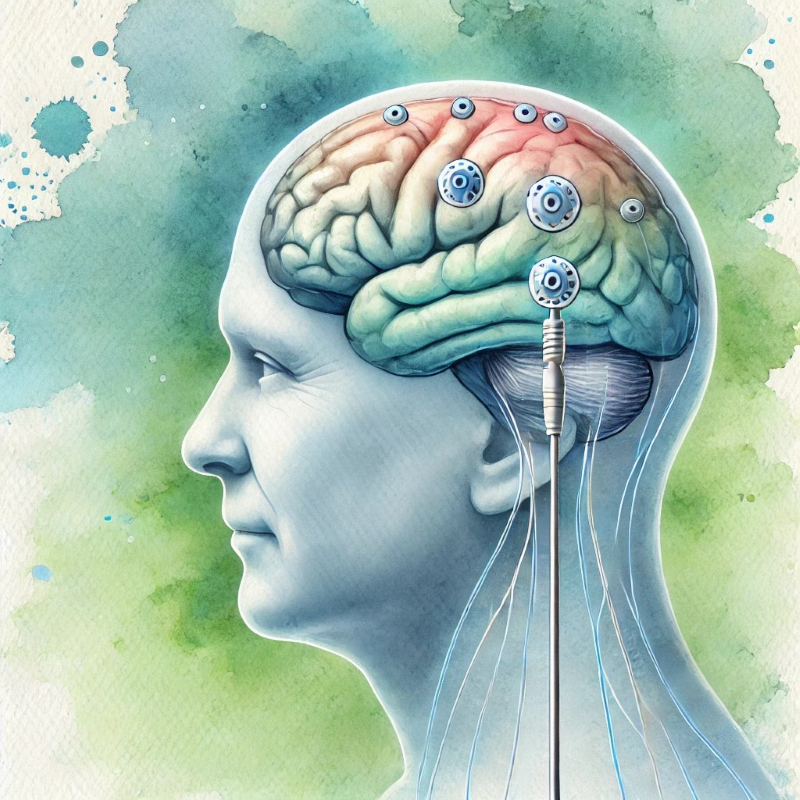Title: Understanding Advanced Parkinson’s and Deep Brain Stimulation

Living with Parkinson’s disease (PD) brings many challenges, especially as the condition progresses into advanced stages. For those managing advanced PD, finding effective treatment options is critical to improving quality of life. One promising option for advanced PD patients is Deep Brain Stimulation (DBS), a surgical procedure that has been proven to alleviate many of the more severe motor symptoms. In this blog post, we’ll explore what it means to have advanced PD, how the National Coverage Determination (NCD) for DBS plays a role in treatment, and what factors healthcare providers consider when recommending DBS.
Defining Advanced Parkinson’s Disease
Advanced Parkinson’s disease is characterized by a significant decline in motor function, often affecting a patient’s ability to perform daily tasks. While PD can be managed with medication in the earlier stages, individuals with advanced PD experience severe symptoms that are less responsive to standard treatments.
The National Coverage Determination (NCD) for DBS relies on specific clinical scales to categorize advanced PD and determine eligibility for the procedure:
- Hoehn and Yahr (HY) Scale: This is one of the most commonly used scales to classify the severity of Parkinson’s disease. The scale ranges from 1 to 5, with a score of 3 or higher indicating that the patient has reached the advanced stages of PD. A score of 3 means that balance problems are now present, and everyday activities like walking or dressing are more challenging.
- Unified Parkinson’s Disease Rating Scale Part III (UPDRS III): This scale measures motor function and is used to assess the severity of PD motor symptoms, including tremor, rigidity, and bradykinesia (slowness of movement). A score of 30 or higher on the UPDRS III scale typically indicates advanced PD, where symptoms are debilitating and significantly interfere with the patient’s quality of life.
What is Deep Brain Stimulation (DBS)?
Deep Brain Stimulation is a surgical procedure in which electrodes are implanted in specific areas of the brain. These electrodes are connected to a device, similar to a pacemaker, which delivers electrical impulses to regulate abnormal brain activity. For people with advanced PD, DBS can be life-changing, as it reduces the severity of motor symptoms and improves the overall quality of life.
DBS is generally considered when medications like levodopa are no longer effective at controlling symptoms, or when patients experience intolerable side effects from their medication. By targeting motor symptoms such as tremors, rigidity, and dyskinesia, DBS allows patients to regain a level of independence and improve daily functioning.
The National Coverage Determination (NCD) for DBS
The National Coverage Determination (NCD) by the Centers for Medicare and Medicaid Services (CMS) outlines the conditions under which DBS is covered for Parkinson’s disease. Based on a National Coverage Analysis (NCA), which reviews extensive research and clinical studies, the NCD establishes criteria for patient eligibility for DBS.
One key takeaway from the NCD is the use of the HY and UPDRS III scales to define which patients qualify as having “advanced PD.” In the studies informing the NCD, a Hoehn and Yahr score of 3 or higher or a UPDRS III score of 30 or more was typically used to classify patient cohorts with advanced PD. This standardized approach ensures that only patients who are most likely to benefit from DBS receive the treatment.
Key Points from the NCD for DBS:
- Eligibility Criteria: The NCD outlines that DBS is covered for patients who have advanced PD, with a HY score of 3 or more or a UPDRS III score of 30 or more. This ensures that DBS is recommended for those whose motor symptoms have progressed significantly.
- Research-Based Decision: The NCD is based on thorough clinical research, which supports DBS as an effective treatment for reducing motor symptoms in patients with advanced PD. This includes improving symptoms such as tremors, rigidity, bradykinesia, and dyskinesia, which often lead to significant reductions in medication needs.
- Advanced Stage of Parkinson’s Disease: As mentioned earlier, an HY score of 3 means that postural instability becomes prominent, leading to problems with balance. A UPDRS III score of 30 or more reflects severe motor impairment that can drastically reduce a person’s ability to perform routine tasks.
Patient Considerations for DBS
When discussing DBS with a patient, the NCD helps to guide conversations about eligibility and outcomes. As a Movement Disorder Specialist, it is essential to evaluate each patient based on their response to medication, the severity of their symptoms, and their overall health status.
Conclusion
Understanding the NCD for DBS is crucial for patients with advanced PD who are seeking more effective treatment options. The Hoehn and Yahr scale and UPDRS III help clinicians objectively assess the severity of Parkinson’s disease and determine when DBS is appropriate. DBS offers a promising option for those in the advanced stages, providing relief from motor symptoms and improving daily functioning.
By staying informed about coverage decisions and treatment advancements, patients and healthcare providers can make well-informed decisions about DBS as a treatment option for advanced Parkinson’s disease.
SEO Keywords
Parkinson’s disease, deep brain stimulation, DBS, advanced Parkinson’s, Hoehn and Yahr scale, UPDRS III, motor symptoms, tremor, rigidity, bradykinesia, dyskinesia, National Coverage Determination, Centers for Medicare and Medicaid Services, levodopa, quality of life, movement disorder specialist, NCD, advanced PD treatment, motor function, surgical procedure.
Disclaimer:
“AI-generated medical content is not a substitute for professional medical advice or diagnosis; I hope you found this blog post informative and interesting. www.parkiesunite.com by Parkie”
DALL-E Prompt:
“Create a watercolor image of a patient with Parkinson’s disease undergoing a deep brain stimulation procedure, showing an illustration of the brain with implanted electrodes. The background should include soft, calming hues of blue and green, evoking a sense of hope and medical advancement.”